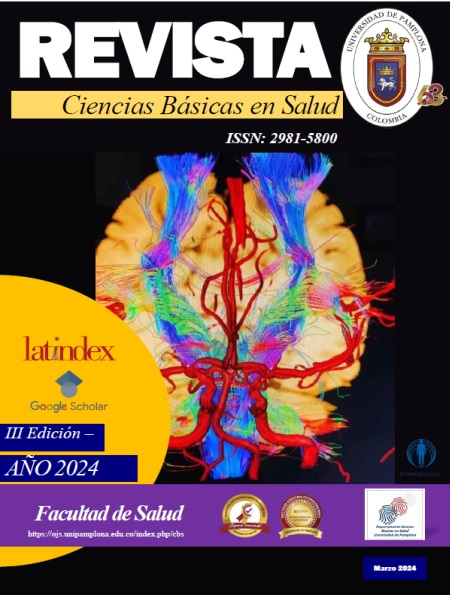Luxación esternoclavicular posterior con ocupación mediastinal: un diagnóstico desafiante tras el trauma de torax
DOI:
https://doi.org/10.24054/cbs.v2i1.2781Palabras clave:
Luxación Esternoclavicular, Reducción, MediastinoResumen
Las luxaciones esternoclaviculares son una condición poco común pero importante que puede presentarse tras traumatismos directos o indirectos. La mayoría de los casos involucran luxaciones anteriores, menos graves que las posteriores, estas últimas representando un riesgo significativo debido a su proximidad a estructuras vasculares y nerviosas vitales. El diagnóstico se basa en hallazgos clínicos y confirmación mediante imágenes radiológicas. La evaluación incluye anamnesis detallada, examen físico y estudios por imágenes como tomografía computarizada con contraste. El tratamiento varía desde métodos conservadores hasta intervenciones quirúrgicas, dependiendo de la gravedad de la lesión y la presencia de complicaciones. Presentamos un caso de luxación esternoclavicular posterior con compromiso mediastinal tratado quirúrgicamente con éxito, resaltando la importancia de un diagnóstico preciso y un manejo oportuno para evitar complicaciones a largo plazo.
Descargas
Referencias
Sernandez, H., & Riehl, J. (2019). Sternoclavicular Joint Dislocation: A Systematic Review and Meta-analysis. Journal of orthopaedic trauma, 33(7), e251–e255. https://doi.org/10.1097/BOT.0000000000001463
Ingoe, H., Mohammed, K. D., Malone, A., Beadle, G., Sharpe, T. R., Cockfield, A., Lloyd, R. E., Singh, H., & Colgan, F. (2023). Traumatic posterior sternoclavicular joint dislocation – Current aspects of management. Injury-International Journal of The Care of The Injured, 54(11), 110983. https://doi.org/10.1016/j.injury.2023.110983
Carius, B. M., Long, B., & Gottlieb, M. (2021). Evaluation and Management of Sternoclavicular Dislocation in the Emergency Department. The Journal of emergency medicine, 61(5), 499–506. https://doi.org/10.1016/j.jemermed.2021.07.038
Morell, D. J., & Thyagarajan, D. S. (2016). Sternoclavicular joint dislocation and its management: A review of the literature. World journal of orthopedics, 7(4), 244–250. https://doi.org/10.5312/wjo.v7.i4.244
Martínez, A., Rodríguez, A., González, G., Herrera, A., & Domingo, J. (1999). Atraumatic spontaneous posterior subluxation of the sternoclavicular joint. Archives of orthopaedic and trauma surgery, 119(5-6), 344–346. https://doi.org/10.1007/s004020050424
Fraind-Maya, G., & Pons-Carrera, G. A. (2022). Anterior sternoclavicular dislocation, description of surgical technique. Acta Ortopédica Mexicana, 36(1), 48-51.
Escobar, L. F. N., Tobón, J. J. D., & Correa, J. B. (2016). Tratamiento quirúrgico de la luxación esternoclavicular. Revista Colombiana de Ortopedia y Traumatología, 30(4), 144-149.
Kiel, J., Ponnarasu, S., & Kaiser, K. (2023). Sternoclavicular Joint Injury. In StatPearls. StatPearls Publishing.
Pimenta, R., Alegrete, N., Vidinha, V., Lima, S., & Pinto, I. (2013). Medial Epiphyseal Fracture-detachment of the Sternoclavicular Joint with Posterior Displacement in a Judo Athlete - equivalent of Posterior Sternoclavicular Dislocation. Revista brasileira de ortopedia, 48(2), 196–199. https://doi.org/10.1016/j.rboe.2012.05.007
Descargas
Publicado
Número
Sección
Licencia
Derechos de autor 2024 Revista Ciencias Básicas en Salud

Esta obra está bajo una licencia internacional Creative Commons Atribución-NoComercial 4.0.







